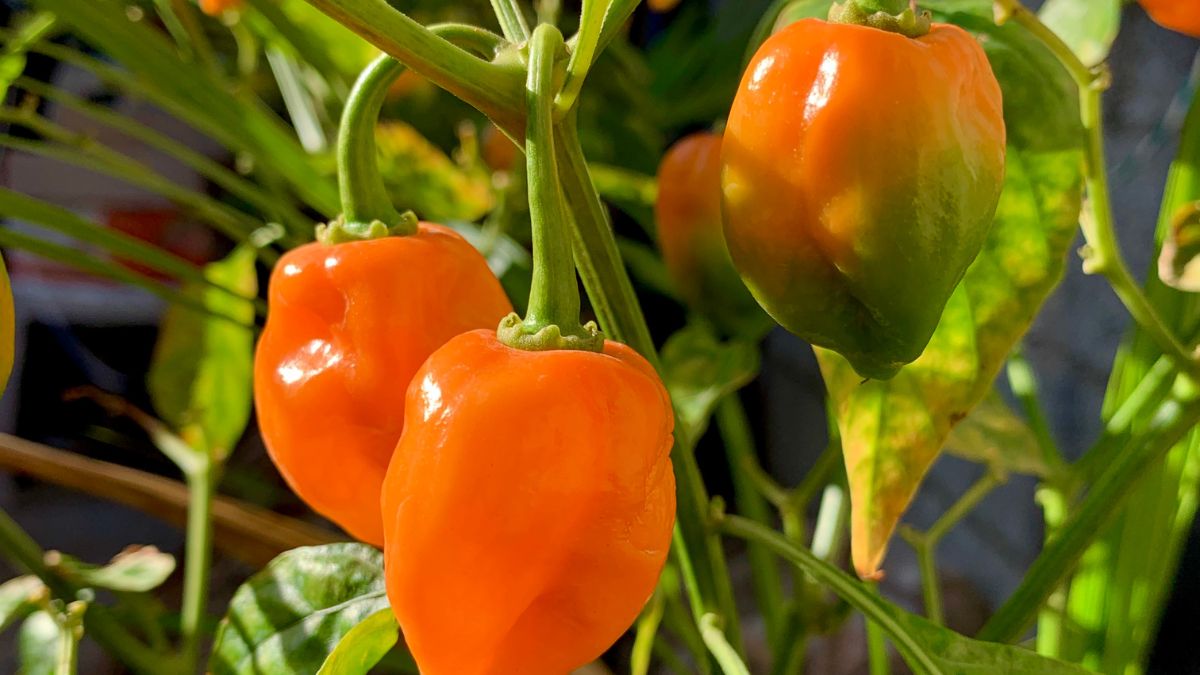The range of chili peppers available to add heat to our culinary explorations is extensive. The Chile Habanero is a kind of pepper that has been making headlines for its eye-watering intensity and distinctive taste. In this essay, we’ll learn all about the history, properties, culinary applications, and medicinal use of this fiery pepper.
The Origins of Chile Habanero
The Chile Habanero, or Habanero pepper, is native to Mexico’s Yucatán Peninsula. History of this hot pepper goes back thousands of years, to the time when it was originally cultivated and consumed by the Mayan and Aztec civilizations.
Characteristics are:
Heat Level
The habanero pepper from Chile is famous for its extreme heat. Its spiciness, as measured by the Scoville scale, may be anywhere from 100,000 to 350,000 SHU. So it’s possible it’s as much as a hundred times hotter as a jalapeo.
Appearance
These peppers range in size from a couple of inches to four or five inches in length and are available in a rainbow of hues. They may be recognized by their wrinkly, lantern-like appearance.
Flavor Profile
Chile Habanero has a delicious, citrusy taste in addition to its scorching heat, making it a versatile ingredient. It adds more than simply heat to the dish by imparting a unique flavor.
Culinary Uses
Hot Sauces
Some of the best tasting hot sauces use these habanero because of the scorching kick it adds to the dish.
Salsas
Salsas made with these peppers are known for their heat and taste in Mexican cooking. They give tacos, burritos, and nachos a another kick of flavor.
Marinades
Infusing meats and shellfish with their signature heat and flavor, habanero peppers are frequently used in marinades.
Pickling
Pickled Habanero peppers are a common condiment that may be used in a variety of ways.
Health Benefits
Rich in Vitamins
The vitamins A and C found in Chile Habanero are important for a healthy immune system and beautiful skin.
Metabolism Boost
Capsaicin, found in Habanero peppers, has been shown to speed up metabolism and help people control their weight.
Pain Relief
Capsaicin is a valuable component in several lotions and ointments because it reduces pain when administered topically.
Antioxidant Properties
Antioxidants in these peppers may help protect against chronic illness by neutralizing dangerous free radicals.
Cooking Tips
Wearing gloves is recommended while working with Chile Habanero because the oils in the pepper can cause skin and eye discomfort. It’s important to use caution while cooking with this pepper since its heat might overpower other ingredients.
Conclusion
Chile Habanero stands out for its tremendous heat and distinctive flavor. It has become an integral part of many different cuisines across the world, most notably in the form of salsas and spicy sauces. Chile Habanero can provide a fiery flavor to any dish, so keep it in mind the next time you crave something hot.
FAQs
1. How do I reduce the heat of these chile in a dish?
Peppers may be used in cooking without adding too much heat if the seeds and membranes are removed before they are used.
2. Are there any milder alternatives to these Chile?
Yes, jalapeos and poblano peppers are good options if you like a less intense flavor.
3. Can I grow these at home?
Absolutely! Chile Habanero may be grown anywhere with sufficient sunshine, including in containers.
4. What are some traditional Mexican dishes that feature Chile Habanero?
Habanero salsa, Yucatan-style pork, and hot ceviche are a few examples of well-liked foods.
5. Are there any health risks associated with consuming these chile?
Even though Habanero peppers provide health advantages, eating too many of them at once might cause stomachache and other gastrointestinal distress. The key is moderation.









